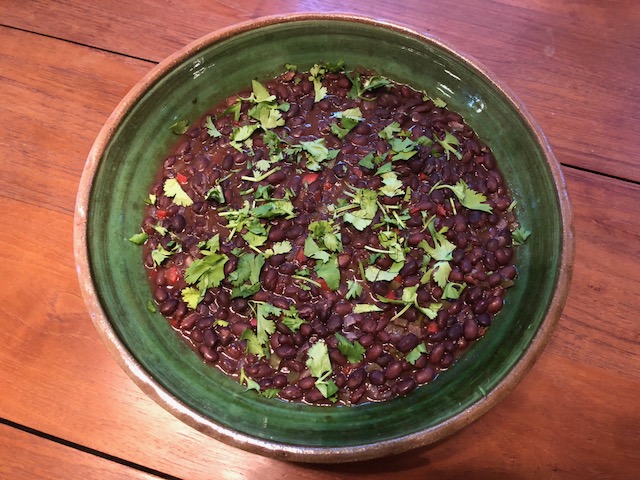,
Turkish White Bean
Salad
Here’s a traditional “meze,” or Middle Eastern appetizer, that
I learned from my friend “Kalo,” a Turkish chef and restaurant owner in Decatur.
I used to hang out at his place when I was free on Saturday afternoons, and
served as “Guest Chef.” The time working with Kalo and several other guys there
influenced my cooking considerably, both at home and at our family restaurant
in Athens, Donderos’ Kitchen.
The dish is completely “vegan” or (as the new term is
emerging) “plant-based.” The freshly grated ginger and the cinnamon give the dish
its exotic and slightly “meaty” overtones. We make a similar, though slightly
different, white bean salad for catering at Donderos’ Kitchen.
The recipe serves six to eight as part of an appetizer
selection, or about six as a side dish.
2 (14-ounce) cans Great Northern beans, drained and rinsed
1/4 cup minced red onion
1 medium-large clove garlic, minced or put through a garlic
press
1/2 teaspoon grated fresh ginger
1/2 teaspoon salt, plus more to taste
1/2 teaspoon oregano
1/4 teaspoon ground cinnamon
1/2 teaspoon paprika, plus more for sprinkling on top
1/4 teaspoon black pepper
A pinch of cayenne
3 tablespoons freshly squeezed lemon juice
2 tablespoons extra virgin olive oil
1/2 of a long cucumber or 2 Persian cucumbers, quartered
lengthwise, and cut into 1/2-inch cubes
1/2 cup “grape” or cherry tomatoes, halved
2 tablespoons coarsely chopped parsley, flat ‘Italian type’
preferred
2 tablespoons coarsely chopped cilantro
Kalamata or other Greek black olives for garnish
Drain the beans, rinse them in running water, and drain
again. Place them in a large bowl with the onion, garlic, ginger, salt, dry
seasonings, lemon juice, and olive oil. Mix gently so as not to break the beans.
Allow to marinate for at least 10 minutes, stirring occasionally. Add the
cucumber, tomato, parsley, and cilantro. Stir in and allow the mixture to sit
several minutes.
Taste a bean and cucumber piece and a little dressing. Add
salt and/or lemon juice if necessary for full flavor and light tanginess. Ideally,
let the salad sit at least 20 minutes before serving. (Refrigerates well for up
to 8 hours.) Taste one last time before serving and adjust seasonings if
necessary.
Serve in a shallow dish, or several small low bowls for a
meze table. Garnish by sprinkling with a little paprika, and arrange a few
black olives on and around the salad.































